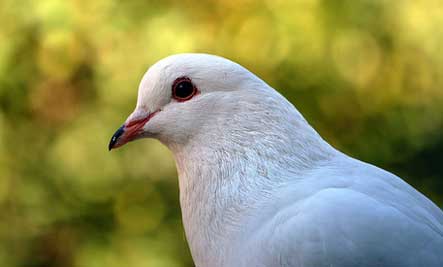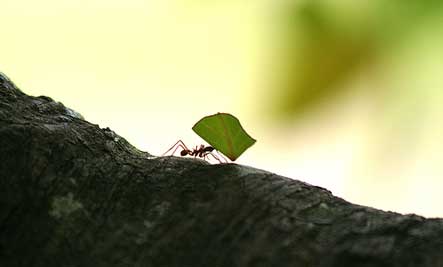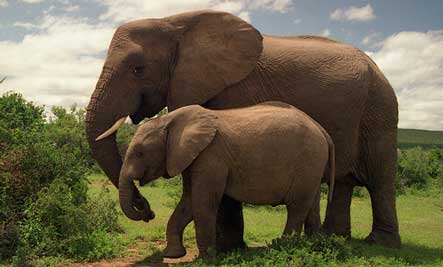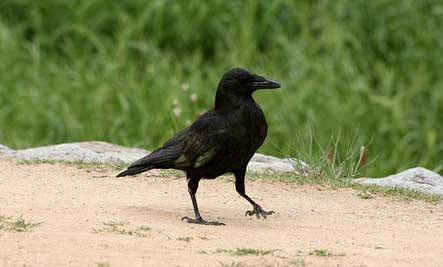
1. Homing Pigeons
While most humans need several types of maps and a compass to find their way home after a long journey, the homing pigeon can return from extremely long distances (more than 1,100 miles) without any guidance.
Well, as a matter of fact, they do have some help: According to research by the University of Frankfurt, these pigeons have iron-containing structures in their beaks, which help them sense the Earth's magnetic field independent of their motion and posture, and thus identify their geographical position.
Research results this year indicate this magnetic charm is present in other birds as well.

Ants
Despite their size, the world's many varieties of ants have amazing skills. One of the most impressive is themycocepurus smithii from the Amazon, a super feminist species that has developed the ability to reproduce via cloning -- dispensing with both sex and males -- to evolve into an all-female breed.
According to research from the University of Arizona, it's not clear when the change happened, but by reproducing without sex, the ants avoid the energetic cost of producing males and double the number of reproductive females produced each generation.
For us humans, ants have also learned super efficient ways to organize their traffic. And 2006 research by the Berkeley University of California has established that the trap-jaw ant (odontomachus bauri) can close its mandibles at an incredible speed: The strike lasts 0.13 milliseconds, 2,300 times faster than the blink of an eye. This allows them to jump enormous heights for their size.

3. Elephants
They're huge, and sometimes they seem tired and slow. But it's no surprise that this mammal's peculiar nose is really something: Research from the University of St. Andrews suggests that elephants can keep track of up to 30 absent members of their family by sniffing out their scent and building a mental map of where they are. How useful would this little feature be for moms with several kids?
Even better, according to another study by the same University, elephants can tell whether a human is friendly or a threat by their scent and color of clothing. So good luck trying to fool them.

4. Termites
In Zimbabwe, the termite species Macrotermes michaelseni has developed a precise technique to farm a specific fungus they feed on. As this fungus can only grow at 87 degrees Fahrenheit, and temperatures outside range from 104 degrees Fahrenheit during day and 35 degrees Fahrenheit at night, the termites have come up with a system to keep the temperature steady in their mounds by constantly opening and closing heating and cooling vents.
This is such a useful idea that Loughborough University has conducted research in order to use the same technique in human buildings. Case in point - the Eastgate Centre in Harare, Zimbabwe has been modeled after the termites' system.

. Chimps
Much has been said about the intelligence of chimps, with some people claiming they're geniuses and others saying they're only as smart as a three year old kid. Of course, the actual facts fall in between.
But there is at least one area in which chimpanzees are smarter than humans -- photographic memory.A study by the Primate Research Institute at Kyoto University proves young chimpanzees have an extraordinary working memory capability for numerical recollection, better even than that of human adults tested with the same apparatus following the same procedure.
Presented with the same sequence of numbers, small chimps could recall them, outperforming humans. Not too shabby.

6. Crows
Contrary to the massive amount of animals and species facing extinction, crows are thriving, reproducing all over the world, with the small exceptions of the Arctic and the Southern tip of South America.
But, although they're proven to be smart in many ways (as Joshua Klein explains in this TED talk), officially scientists say they're not smarter than humans.
However, their amazing capacity for fast adaptation and ability to live in cities show they could be a lot more than they are today. And who knows, one day they might top us.

7. Dolphins
Ok, again, not officially smarter than humans yet, but dolphins have recently been declared the world's second most intelligent creatures (after humans). A zoologist from Emory University in Atlanta, Georgia, according to The Times,has even gone far to say that their "neuroanatomy suggests psychological continuity between humans and dolphins," and called for reconsideration of human-dolphin interactions. Another scientist from the Loyola Marymount University in Los Angeles has even called them 'non-human persons.'
So yes, dolphins are smarter than chimps and with communication skills similar to humans'. Their brains are only second in mass to the human brain, making them cultural animals with distinct personalities with the ability to think about the future, among other faculties.






























